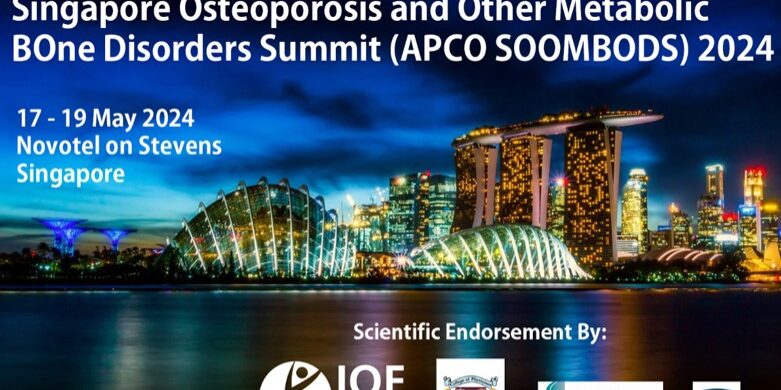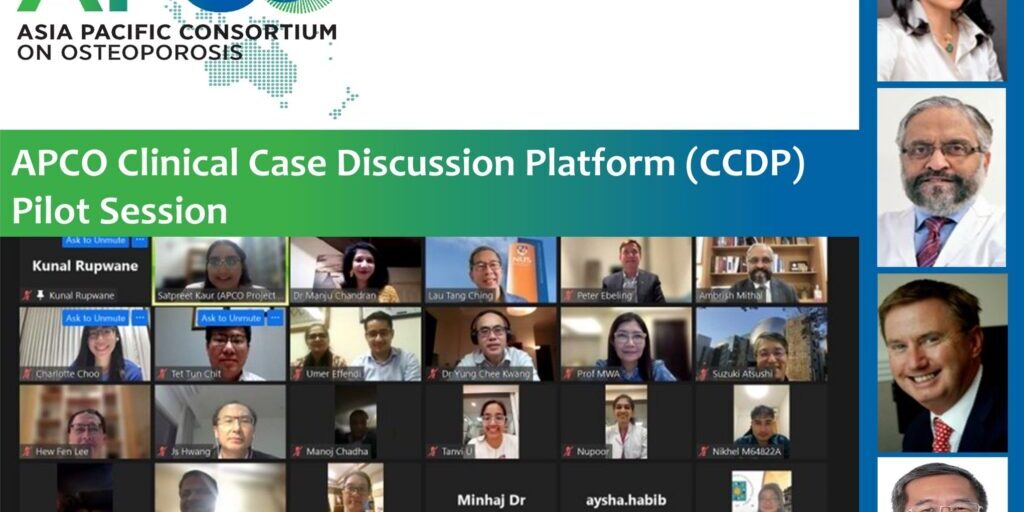How the APCO Framework can help
On January 28, 2021, the Asia Pacific Consortium on Osteoporosis (APCO)- a non-partisan and apolitical organisation that is comprised of individual osteoporosis experts hailing from diverse health care systems from across the Asia Pacific region launched ‘The APCO Framework’- the first pan-Asia Oceania clinical practice standards for the screening, diagnosis, and management of osteoporosis, targeting a broad range of high-risk groups. Published in Osteoporosis International in January 2021 ‘The APCO Framework’ comprises 16 minimum clinical standards set to serve as a benchmark for the provision of optimal osteoporosis care in the region. Coverage of the publication was generated across more than 300 regional news platforms at that time.
Since its publication, The Framework has attracted extensive attention throughout the Asia Pacific region among healthcare professionals, leading osteoporosis organisations, and regional medical and consumer news platforms. APCO members are actively disseminating information about, and encouraging implementation of The Framework in their respective countries.
This blog summarises six recent invited editorial pieces, commentaries and opinion pieces on the APCO Framework, authored by its Chairperson Prof Manju Chandran and/or APCO members all of whom are distinguished osteoporosis experts in their respective countries. Each publication reinforces how The Framework can serve as the cornerstone to harmonize national and regional osteoporosis clinical practice guidelines in the Asia Pacific. The other key message that is highlighted across the articles is that, collaborating with regional consultative bodies such as APCO and international musculoskeletal organisations such as the International Osteoporosis Foundation (IOF) is not at odds with supporting the development of national health systems and osteoporosis guidelines, and in fact will only serve to enrich them. A brief summary of the different articles are provided below.
Tackling osteoporosis and fragility fractures in Singapore
The Annals of the Academy of Medicine, Singapore
Written by APCO Chairperson, Professor Manju Chandran, Singapore and APCO Executive Committee Member, Adjunct Associate Professor, Paul Mitchell, New Zealand, this invited editorial in the nation’s most respected medical journal- the Annals of the Academy of Medicine Singapore, reveals that Singapore is one of the few countries in the Asia Pacific region which regards osteoporosis as a national health priority. Following successful lobbying by healthcare providers, osteoporosis was included in Singapore’s Chronic Disease Management Programme in 2015, covering the cost of outpatient clinic visits through Singapore’s compulsory national health insurance-Medisave. Furthermore, individual units such as the Osteoporosis and Bone Metabolism Unit – the only such unit in the country exclusively devoted to clinical care and research in osteoporosis and other metabolic bone diseases at Singapore’s oldest and largest hospital- Singapore General, together with various other Singaporean organisations, continue to work towards heightening public and healthcare professional awareness of osteoporosis in the country.
The article acknowledges that although Singapore is moving in the right direction, the country cannot afford to work in isolation, and must therefore, collaborate with external entities and organisations, such as the International Osteoporosis Foundation (IOF) and APCO, to tackle the region’s growing burden of osteoporosis. The article further explains how The APCO Framework can be tailored to meet individual national requirements, and can serve as a benchmark for Singapore to revise its own Appropriate Care Guide.
Need for Clinical Guidelines for Management of Osteoporosis and Way Forward for Pakistan
Journal of the College of Physicians and Surgeons, Pakistan
In Pakistan, clinical guidelines on osteoporosis are non-existent. Moreover, there is currently no available report on compliance with any action plan whatsoever in clinical practice. In addition, accurate data on osteoporosis is absent due to the limited number of epidemiological studies performed to date.
Authored by APCO Executive Committee Member, Prof Aysha Habib Khan, Pakistan, and APCO Chairperson, Prof Manju Chandran, Singapore, this editorial argues that the way forward for Pakistan, is to develop country-specific national guidelines using the clinical standards outlined in The APCO Framework as a benchmark. The article further emphasises the importance of the inclusion of osteoporosis as a priority in the National Action Plan by the Government of Pakistan.
Indian Journal of Endocrinology and Metabolism, India
This commentary by APCO members, Professors Sanjay Kumar Bhadada, Manju Chandran, Manoj Chadha, Ambrish Mithal and Dr Rimesh Pal, in the country’s highly recognised and cited Endocrine journal- the Indian Journal of Endocrinology and Metabolism, highlights the evident lack of consensus among local guidelines for the diagnosis and management of osteoporosis in the vast and ethnically diverse country that is India.
The Indian Menopause Society (IMS) published clinical practice guidelines on postmenopausal osteoporosis in 2013, which were later updated in 2019 – 2020. Likewise, the Indian Society of Bone and Mineral Research (ISBMR) also recently drafted a set of clinical practice guidelines for the diagnosis and treatment of osteoporosis in adult men and women. There does however, remains a significant disparity among the Indian guidelines, noting both current ones have not yet addressed current controversies in the field of osteoporosis care.
The article’s authors reflect on how the minimum clinical standards outlined in The APCO Framework can serve as a benchmark for India (and all other countries in the Asia Pacific region) to upgrade and revise their existing national osteoporosis guidelines, or to develop new guidelines.
Osteoporosis Minimum Standards of Care
MJA Insight+, Australia
APCO Executive Committee Member, Professor Peter Ebeling, Australia, developed an opinion piece for MJA Insight+ – the online publication for the Medical Journal of Australia (MJA), published in February, 2021. The article provides an overview of the development of The APCO Framework, including the 5IQ analysis that APCO members performed to evaluate the clinical practice guidelines currently available in the Asia Pacific. The opinion piece highlighted the subsequent, comprehensive, four-round Delphi consensus method, which enabled APCO members to agree on a benchmark set of clinical standards for the provision of quality osteoporosis care for the region.
Avoiding a fractured future: Improving bone health for New Zealanders
NZJM Digest, New Zealand
An opinion piece authored by A/Professor Paul Mitchell, Ms Christine Gill, Prof Nigel Gilchrist, and Prof Ian Reid explores New Zealand’s approach to reducing the incidence of falls and fracture-related injuries among the country’s ageing population. The article discusses the multidisciplinary and multi-sector approach pursued between 2012 and 2021, to achieve the New Zealand Ministry of Health’s expectation that all district health boards would implement a Fracture Liaison Service (FLS). The piece also explores Osteoporosis New Zealand’s (ONZ) efforts to heighten public awareness of the importance of maintaining bone health.
Throughout the Decade of Healthy Ageing (2021 – 2030), ONZ is planning to collaborate with partner organisations in the ‘Live Stronger for Longer’ coalition, and beyond, to draft BoneCare 2030 (a road map for better bone health for New Zealanders), and to update their 2017 ‘Guidance on the Diagnosis and Management of Osteoporosis in New Zealand’. Importantly, updates to the national guidance will be informed by the clinical standards outlined in The APCO Framework.
The need for international collaboration. Osteoporosis Care across boundaries – Focus on South Asia
Newsletter of the Endocrine Society of India (ESI), India
In April 2021, APCO Chairperson, Prof Manju Chandran, was invited to provide commentary in the Inaugural issue of the Newsletter of the Endocrine Society of India (ESI). In this article, Prof Chandran sheds light on the burden of osteoporosis in South Asia – a region of immense physical expanse and topographical heterogeneity, comprising extremely diverse racial, socio- economic, and cultural norms.
Dr Chandran outlines the key problems and challenges in osteoporosis care in the region, including the lack of adequate planning and implementation of health policies, the lack of accessibility to health care resources in several countries in the region, the lack of quality epidemiological data which hampers research, and the significant ethnic and cultural diversity of populations even within nations. Though this paints a picture of doom and gloom, she points out the fact that countries within the region are slowly carving out a common regional identity and attempting to translate political thinking into concrete action. She highlights the necessity for South Asian countries to collaborate with regional and international organisations, such as APCO, and the IOF, to help support the development of individual, national health systems, and to seek effective solutions to key regional health challenges.
For more information about The APCO Framework, head to: apcobonehealth.org/apco-framework
Follow us on LinkedIn to stay abreast of all the latest APCO news and publications: asia-pacific-consortium-on-osteoporosis






